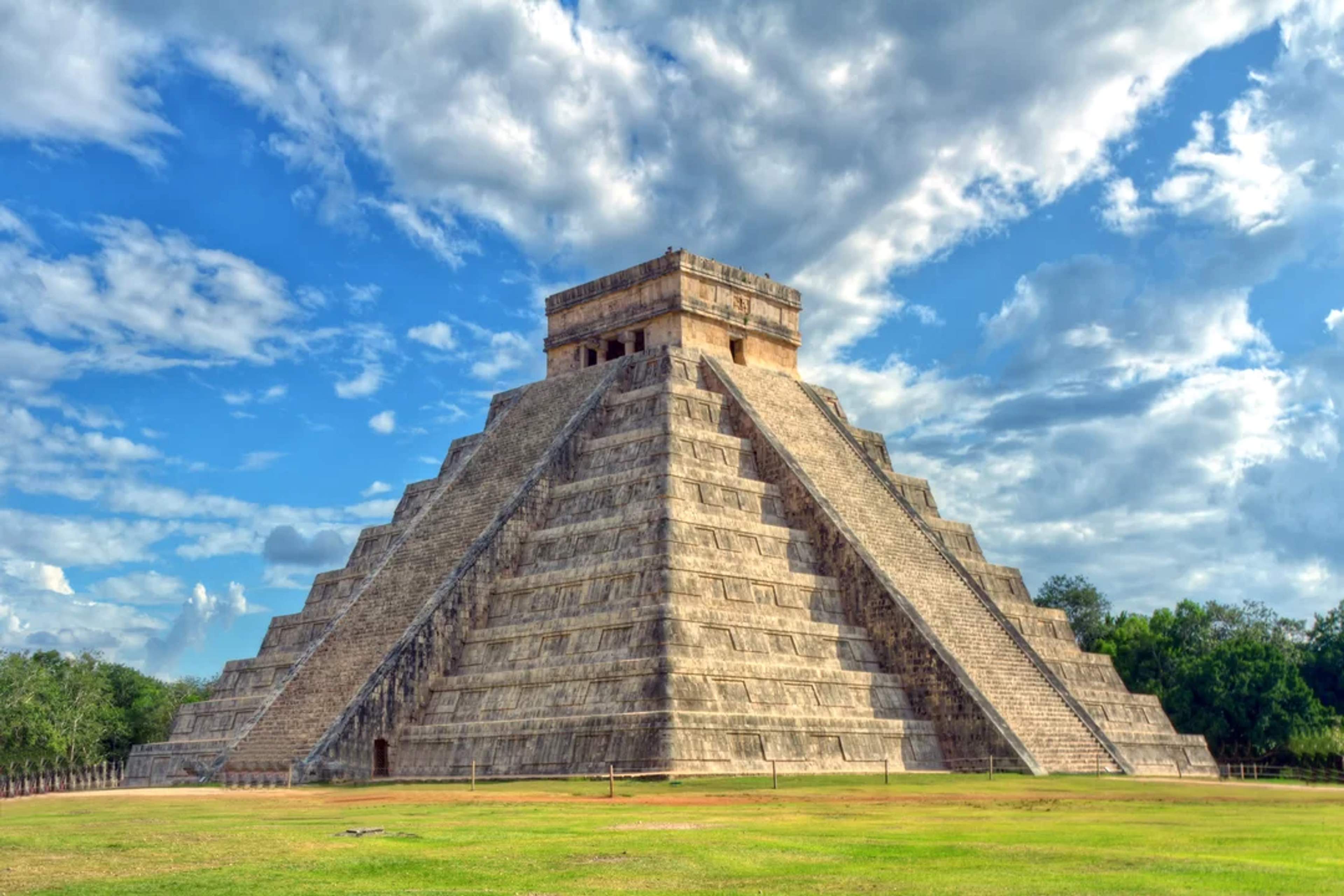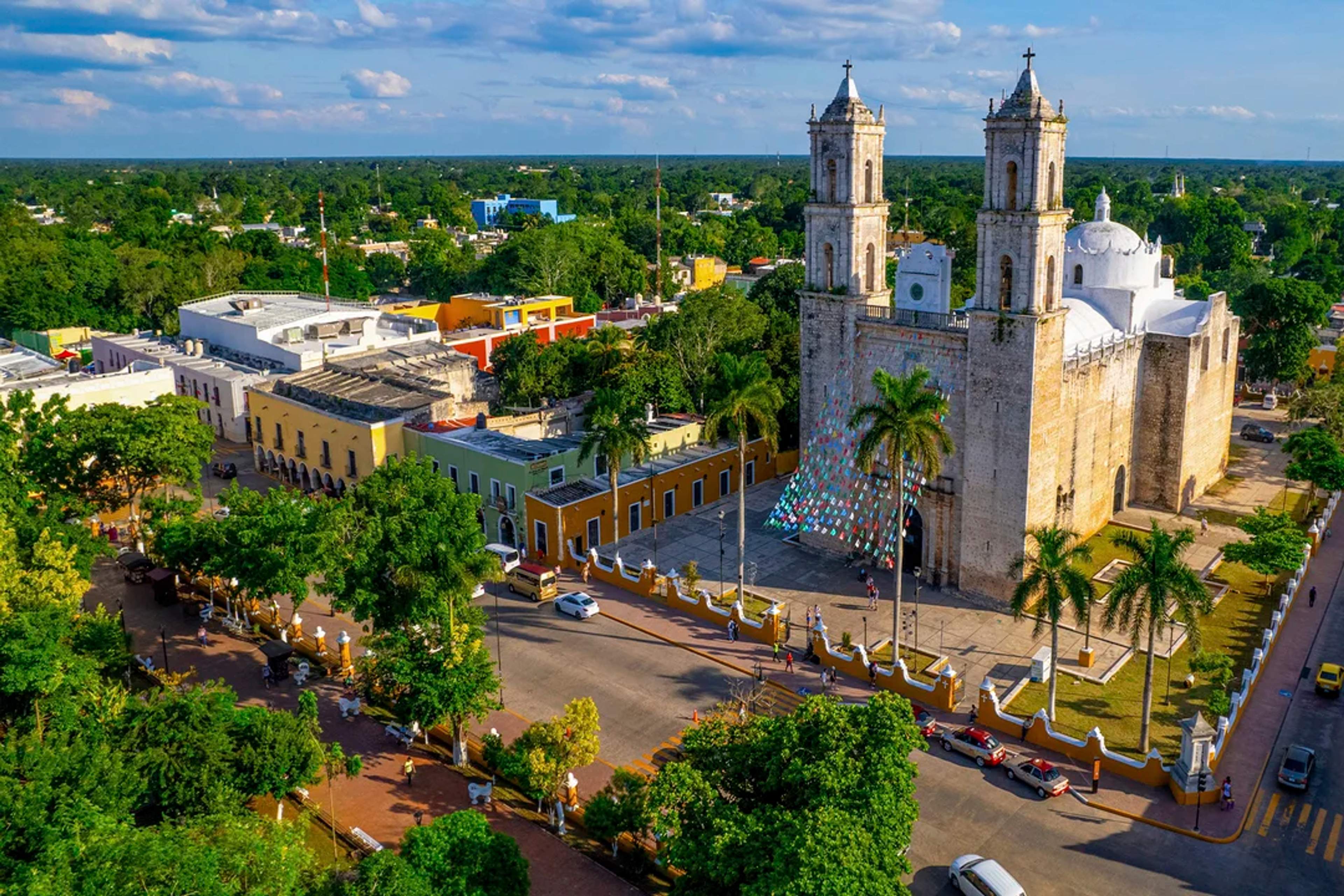Determining the best time to visit the Yucatan Peninsula can make or break your experience. Whether you're chasing perfect weather, trying to dodge crowds, or stretching your travel budget, knowing when to go matters almost as much as where you go.
This spectacular slice of Mexico delivers unforgettable experiences year-round. Picture yourself exploring ancient Mayan ruins in the morning and cooling off in crystal-clear cenotes by afternoon. Between pristine beaches, vibrant coral reefs, and charming colonial towns, the Yucatan serves up the perfect blend of natural beauty, history, and culture.
Let's dive into the Yucatan Peninsula by season, so you can pinpoint exactly when to book your Mexican getaway based on what matters most to you.
Winter: December to February – The Best Time for Perfect Weather

Winter is prime time in the Yucatan Peninsula—and for good reason. These months bring consistently pleasant temperatures in the low 80s, minimal rain, and sunshine that feels refreshing rather than punishing.
This comfortable climate makes exploring archaeological sites a breeze. You can wander through Mayan ruins, discover cenotes, and join cultural tours without melting in intense heat. The beaches shine during winter too, with clear skies and gentle breezes creating ideal conditions for both relaxation and water activities.
While ocean temperatures cool slightly in winter, they remain perfectly swimmable. Evenings might call for a light sweater during dinner or nighttime walks.
Winter also brings the most vibrant nightlife and dining scene as businesses cater to more visitors. But this popularity comes with higher price tags—especially around Christmas and New Year's when accommodation and flight rates peak. If winter calls your name, book well ahead and budget accordingly.
Monthly Yucatan Weather Averages: December to February
December Averages:
- High: 83°F (28°C)
- Low: 68°F (20°C)
- Average days of rainfall: 7
January Averages:
- High: 82°F (28°C)
- Low: 66°F (19°C)
- Average days of rainfall: 5
February Averages:
- High: 84°F (29°C)
- Low: 67°F (19°C)
- Average days of rainfall: 4
Spring: March to May – Balancing Weather and Crowds
Spring hits the sweet spot in the Yucatan Peninsula, balancing comfortable weather with easier access. During these months, you'll enjoy mild temperatures and much lower humidity than summer, making outdoor exploration genuinely pleasant.
March and April represent the golden window for Yucatan travel, with fewer tourists—except during Semana Santa (Holy Week) or Easter when Mexican nationals flock to the region. This typically means better hotel rates and less competition at popular sites, though booking ahead still makes sense during these holiday periods.
June kicks off whale shark season along the Yucatan coast, offering rare chances to swim alongside these gentle giants. It's also when sea turtles begin nesting, allowing you to join conservation-minded night tours to watch these magnificent creatures lay eggs on protected beaches.
Spring weather creates perfect conditions for eco-adventures. Comfortable temperatures make jungle hikes, cenote swimming , and ruin exploration particularly enjoyable. The famous cenotes stay refreshingly cool while the air temperature makes the plunge inviting rather than shocking.
Families love spring here—the balanced climate allows full days of activities without the extreme heat that can wear out kids. Ocean waters warm enough for extended swimming and snorkeling, with typically excellent underwater visibility.
If spring break crowds concern you, they mostly stick to specific areas of Cancun during March. Staying in Playa del Carmen, Tulum, or inland spots like Valladolid lets you easily avoid the college crowd while enjoying everything the region offers.
Monthly Yucatan Weather Averages: March to May
March Averages:
- High: 87°F (31°C)
- Low: 69°F (21°C)
- Average days of rainfall: 3
April Averages:
- High: 90°F (32°C)
- Low: 72°F (22°C)
- Average days of rainfall: 3
May Averages:
- High: 92°F (33°C)
- Low: 74°F (23°C)
- Average days of rainfall: 5
Summer: June to August – Value and Wildlife Encounters

Summer in the Yucatán Peninsula is a lively season packed with energy, activity, and family vacations. July, in particular, is one of the busiest months for tourism, thanks to school holidays and sunny beach weather. Expect vibrant crowds, bustling attractions, and a festive atmosphere.
While it’s technically hurricane season—with warmer temperatures and occasional rain—many travelers find the trade-off worth it. Deals on hotels and tours can still be found, especially if you book early, and the longer daylight hours give you more time to explore the region’s ruins, cenotes, and colonial towns.
Summer rain follows a predictable pattern—typically a quick afternoon shower that provides welcome relief from heat before clearing up. This rhythm makes planning activities around weather easy, and rarely will storms ruin your entire day.
One major summer perk? Experiencing famous Yucatan attractions without crowds. You'll enjoy more peaceful beach time, shorter lines at archaeological sites, and tour guides who can offer personalized attention.
The ocean reaches its warmest temperatures during these months—perfect for swimming, snorkeling, and luxury sailing adventures. Underwater visibility stays excellent for exploring vibrant reefs and cenotes.
Wildlife enthusiasts thrive in summer. Whale shark season continues through August, offering those bucket-list swims with the ocean's gentle giants. Sea turtle nesting and hatching along the coastlines provide another magical natural spectacle.
On rainy days, explore the peninsula's rich culture through museums, cooking classes, or traditional crafts workshops that offer deeper insights into Mayan history and colonial influences.
Monthly Yucatan Weather Averages: June to August
June Averages:
- High: 93°F (34°C)
- Low: 76°F (24°C)
- Average days of rainfall: 10
July Averages:
- High: 93°F (34°C)
- Low: 75°F (24°C)
- Average days of rainfall: 10
August Averages:
- High: 93°F (34°C)
- Low: 75°F (24°C)
- Average days of rainfall: 12
Fall: September to November – Hidden Gems Despite Rain
Fall in the Yucatan mixes challenges with hidden gems for travelers. This period overlaps with Atlantic hurricane season, especially September and October when tropical storm activity peaks. While hurricanes are possible, major storms directly hitting the Yucatan Peninsula remain relatively rare.
September stands as the rainiest month, with frequent afternoon downpours. By October, rainfall gradually decreases, and November transitions toward the drier, cooler conditions of winter.
Fall's biggest advantage? Tourism drops dramatically. This means substantial discounts—often 30-40% off peak-season prices for accommodations and flights. While some restaurants and smaller attractions might reduce hours in September, you'll trade this for a more authentic, uncrowded experience at major sites.
November might be the Yucatan's best-kept secret. Except during Thanksgiving week, this month delivers improving weather, much less rain than previous months, reasonable prices, and noticeably thinner crowds. It's perfect for exploring ancient ruins without the high-season tourist crush.
When planning a fall visit, build flexibility into your schedule to work around potential rain. Mix outdoor activities with indoor alternatives like museum visits, cooking classes, or cenote swimming (which rain doesn't affect). The Mayan World Museum in Mérida and various chocolate museums make excellent rainy-day options.
Monthly Yucatan Weather Averages: September to November
September Averages:
- High: 91°F (33°C)
- Low: 74°F (23°C)
- Average days of rainfall: 15
October Averages:
- High: 88°F (31°C)
- Low: 72°F (22°C)
- Average days of rainfall: 12
November Averages:
- High: 86°F (30°C)
- Low: 70°F (21°C)
- Average days of rainfall: 8
Your Perfect Yucatan Peninsula Experience Awaits

The Yucatan Peninsula welcomes visitors year-round, with each season offering unique benefits depending on your travel priorities.
Winter delivers those postcard-perfect days with brilliant sunshine and comfortable temperatures—perfect for escaping cold weather and exploring ruins without sweating through your clothes. Spring hits that sweet spot of balanced conditions before summer heat arrives, with smaller crowds than winter's peak season.
Budget travelers and marine life fans find summer rewarding despite higher temperatures, with significant savings and special wildlife encounters like whale shark swims. Fall combines fewer tourists with potential bargains, particularly in October and November before holiday crowds arrive.
Whenever you visit, respect the tropical sun with proper sun protective clothing and stay hydrated, especially at archaeological sites. The peninsula's stunning cenotes, ancient Mayan cities, and vibrant culture await your discovery any time of year. Consider joining guided tours to fully appreciate the rich history and natural wonders this remarkable region offers.
Ready to experience the magic of the Yucatan Peninsula yourself? Explore our selection of guided tours and start planning your unforgettable Mexican adventure today!
